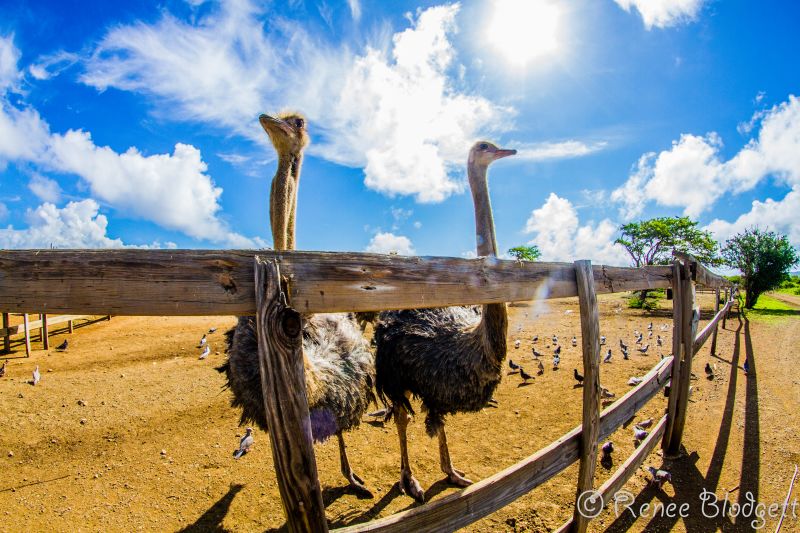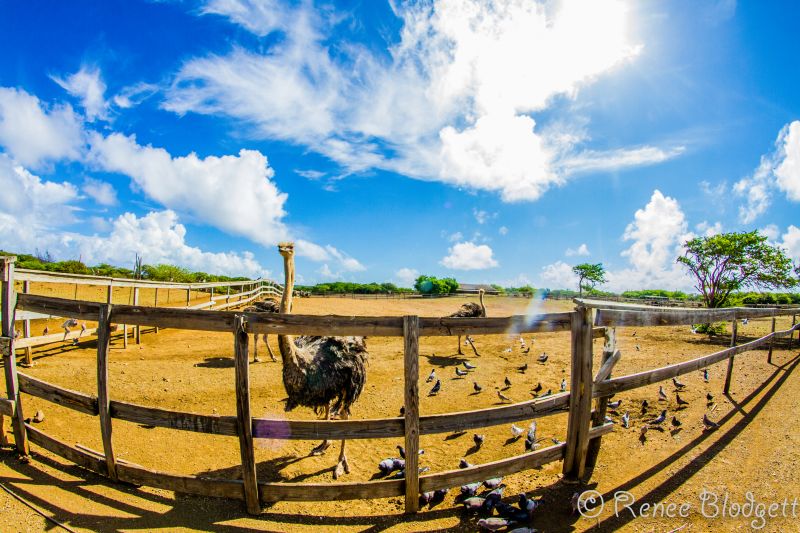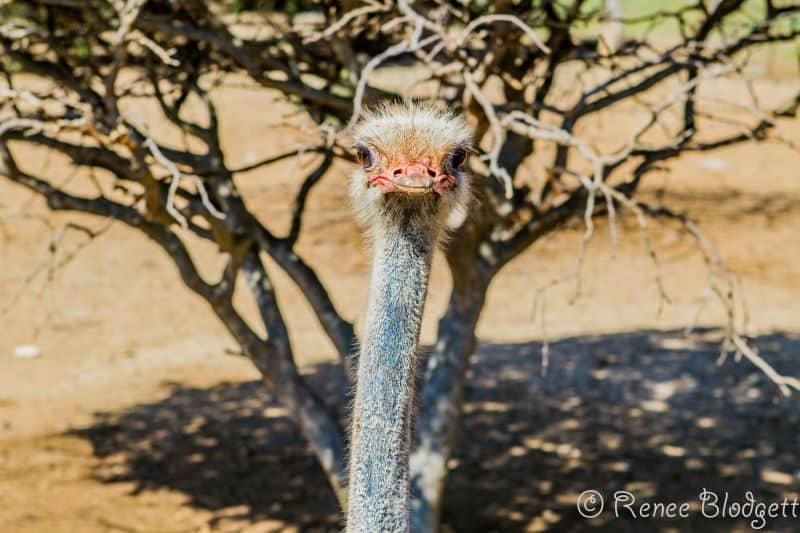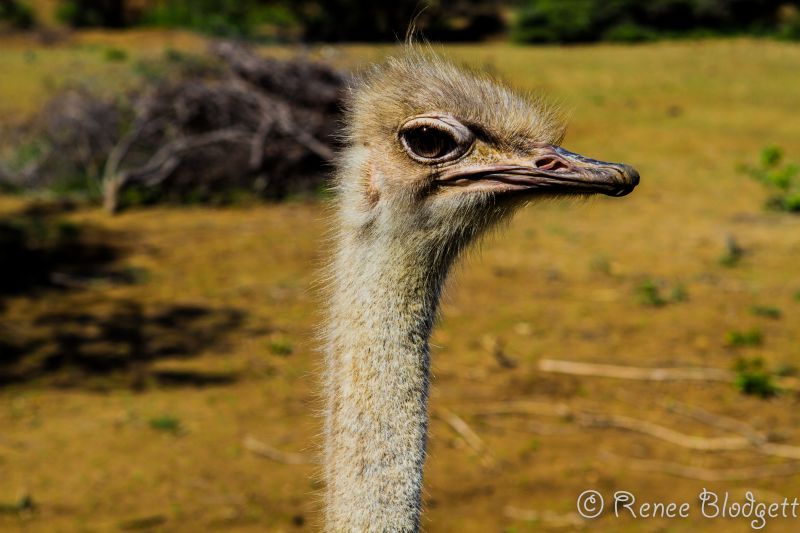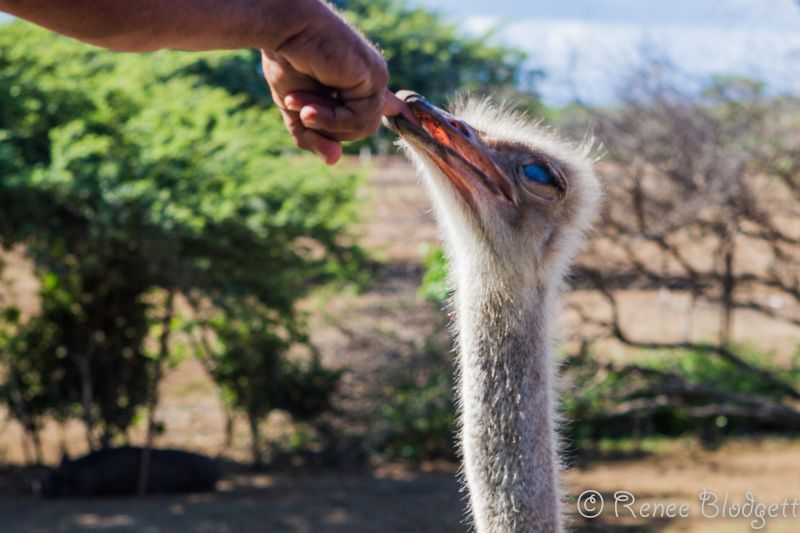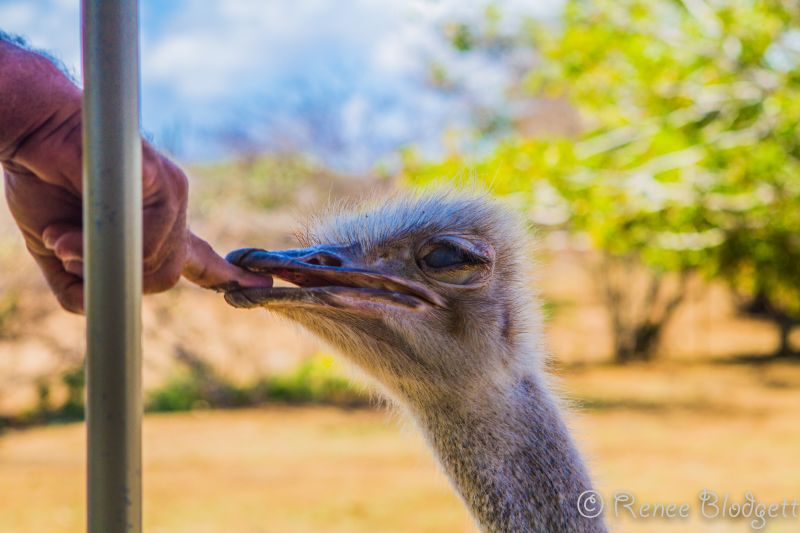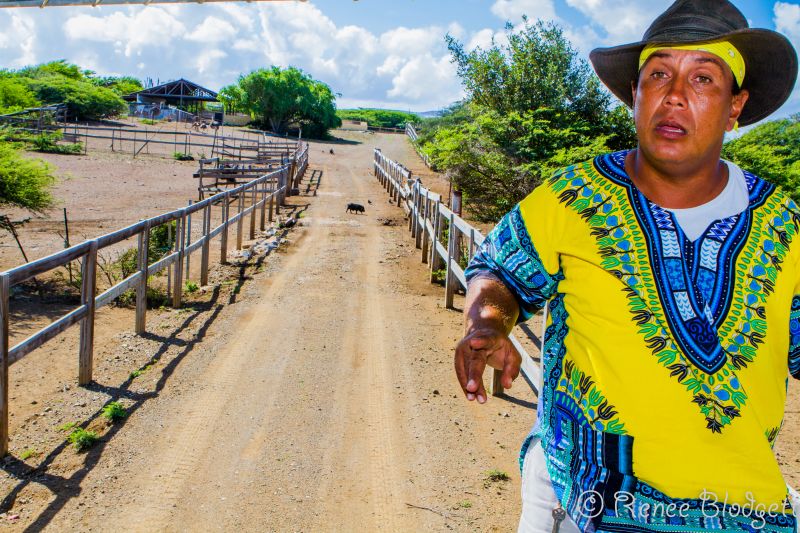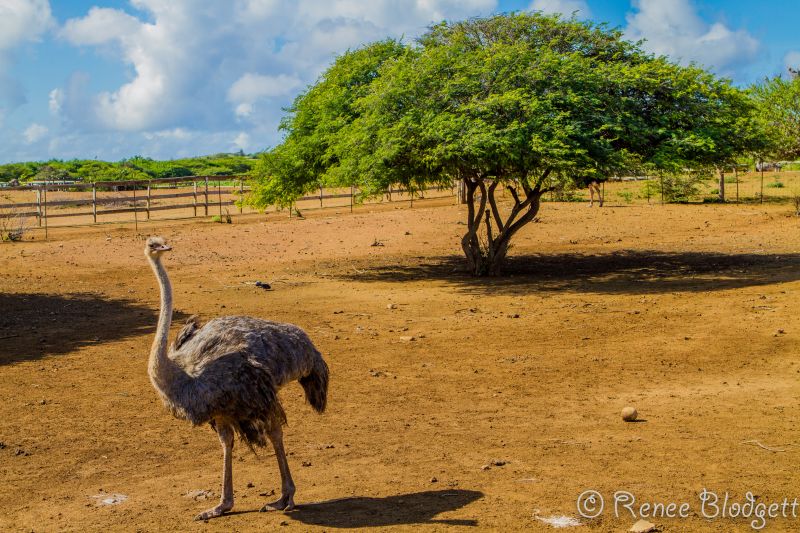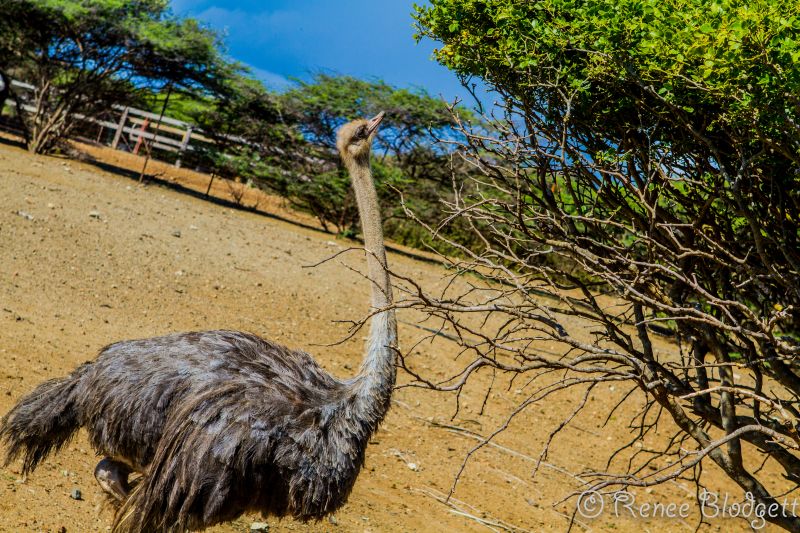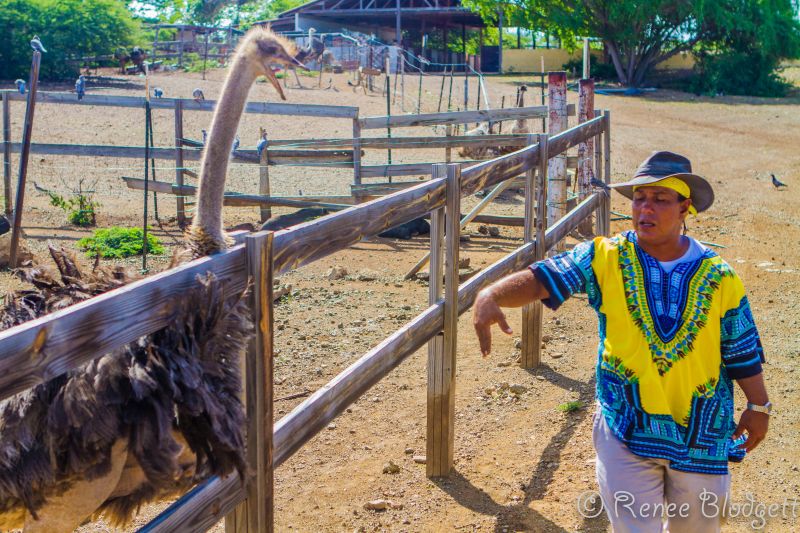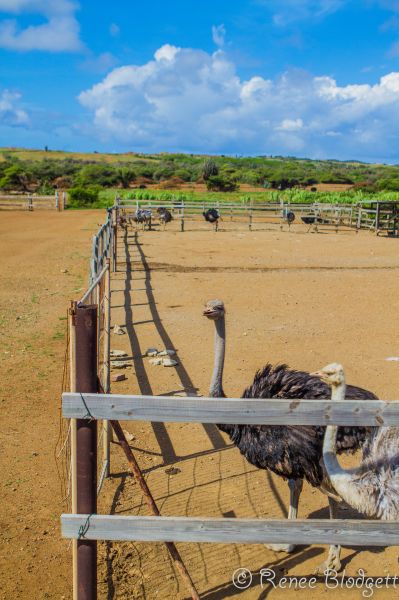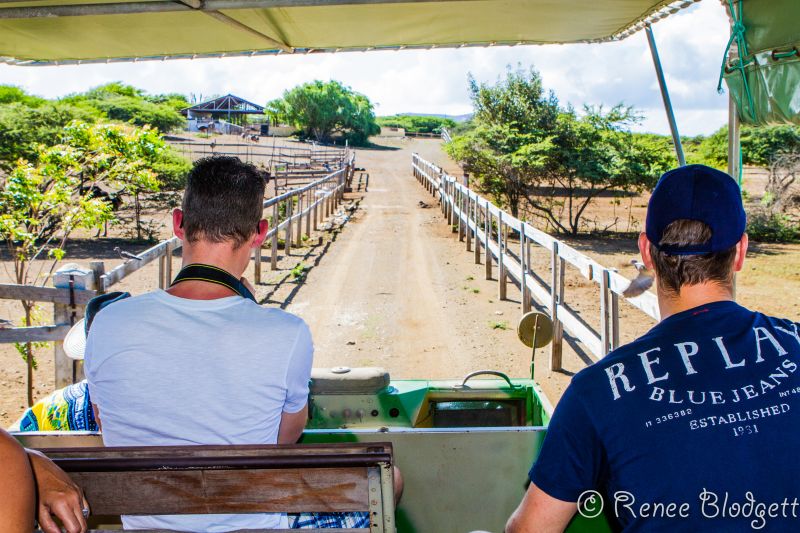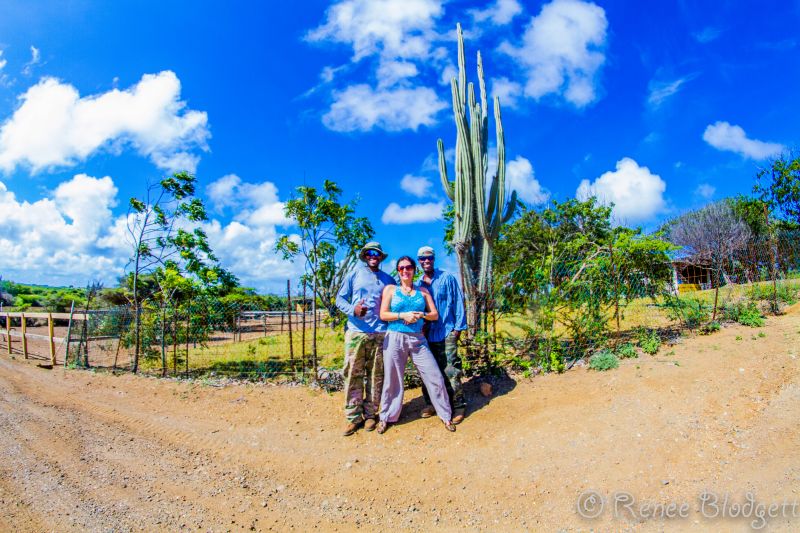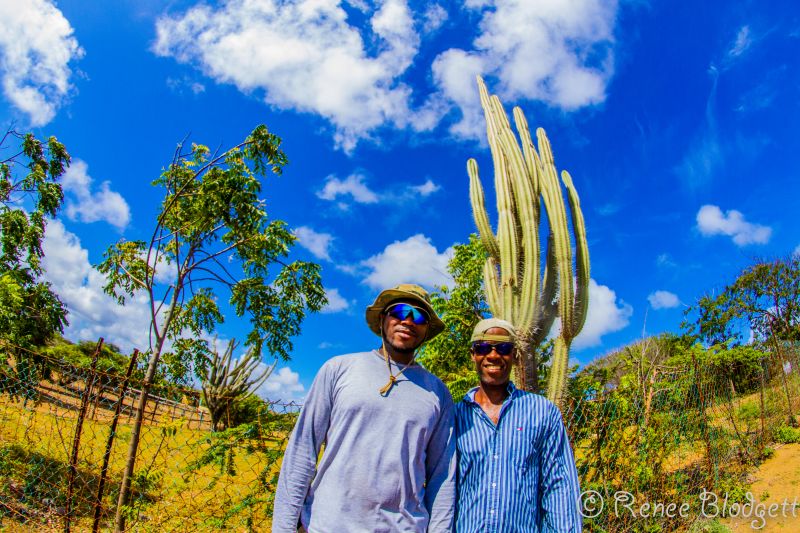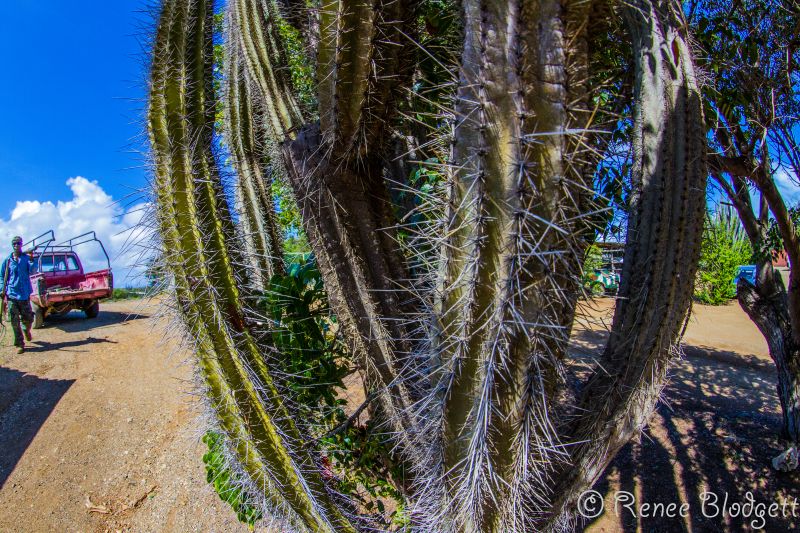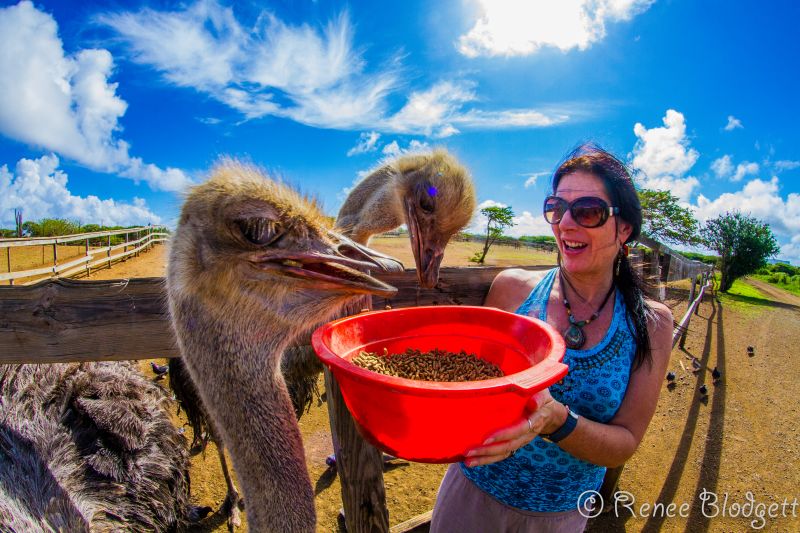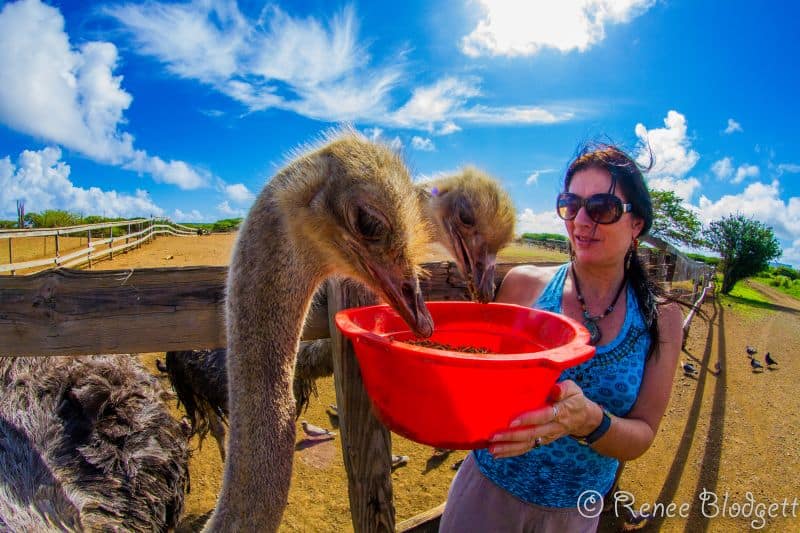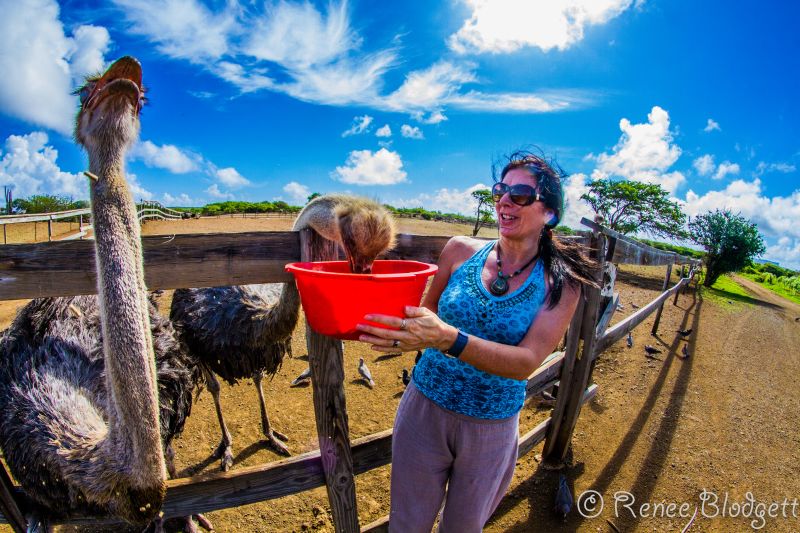While ostriches may not be a common bird for most of us living in North America, I grew accustomed to having them around when I lived in South Africa. I have ridden them a few times and in the northern Transvaal and we used to eat ostrich eggs on the farm where I stayed, oh so delicious compared to chicken eggs. The yolks tend to be richer and so you feel that much fuller that much quicker.
Because of the Dutch influence on the Dutch Caribbean island of Curaçao, I guess I shouldn’t have been surprised to come across an Ostrich Farm, but truth be told, the farm did produce more than a few ‘aha’ moments. Those from South Africa or who have traveled there know about its Dutch influence of course, but what I didn’t expect was just how “South African” the ostrich farm was going to feel.
So yes, near one of the biggest conservancy areas of Curaçao, you’ll find a little piece of Africa. Here you’ll also get access to beautiful views over the St. Jorisbaai and be able to watch the equally stunning views of the sun setting at dusk while hanging out with ostriches, crocodiles, pigs, iguanas and parrots.
You start out in a sun-covered land rover, a multi-colored one that is.
The truck will drive you through the property, while you learn about ostriches and the farm itself.
Up close. Adorable right?
Adorable that is until they want something from you….like food.
We learn a lot about ostriches from our guide, who humored us with mistakes that what he refers to as “farm interns” made early on.
Truth be told, while they are incredibly powerful birds, they are also incredibly graceful.
Take a look at his longer slender neck and how he slowly veers back, looks up and approaches the branches above him with both grace and ease.
There’s a sense of purpose that the ostrich has which I find so fascinating. Awkward looking legs, not unlike a chicken has, he walks with force and yet elegance at the same time.
That’s not necessarily the case when they do a mating dance which one such ostrich did for our guide who claims that the ostrich can’t tell the difference between a human and a bird. And, I thought you said these birds were smart, I thought.
Before you think they’re slow thinking and call them silly looking, remember that ostriches can outrun you, able to achieve speeds greater than 40 miles per hour when running and they are able to maintain that speed for more than 30 minutes at a time. One individual ostrich stride can take him 12 to 15 feet in one shot.
They are smarter than many apparently and indeed, strong. The vast majority of the bird’s body weight is encapsulated in its long and powerful legs. Odd factoid here! Unlike other birds, the ostrich has only two toes which apparently enables the bird to attain greater speeds than many of its predators. Also worth knowing is that his legs are capable of crushing a skull. Like the slow hippo you don’t think can do any damage when you initially see his lazy walk, don’t get in his way.
The reason it now takes a truck to get through the property is due to the farm’s growth over the past ten years. What started out as a family business in 1995, has now grown into a 9 acre farm and I couldn’t help but feel like I was in South Africa driving through it on more than one occasion. It is in fact, the largest ostrich farm outside of Africa today.
What’s great about this eco-friendly property is that there is wheelchair access and plenty of kid-friendly things to do as well, including a museum, making it an ideal stop over for families. The land itself is also beautiful with plenty of cacti around. I even made a few friends who indulged me while I played around with my Canon 7D and the sky’s magical clouds.
In the afternoon or it appears anytime of day really, ostriches love to eat. On the tour, you can feed them — you don’t realize just how massive these birds are until you get up close and have food to give away. Warning: hold onto that plastic bowl tightly since let’s just say that they’re not light eaters.
Details:
The Ostrich Farm
Weg naar Groot St Joris
Curaçao
Tel: (+5999) 747 2777 or 747267
Photo credits: Renee Blodgett
Read through additional articles on Curacao from the most recent trip in December and also other posts on the Caribbean region in general.
Note: I was hosted by the Curaçao Tourism Board however was not asked to write this article nor paid to — all opinions expressed are entirely my own.

Renee Blodgett is the founder of We Blog the World. The site combines the magic of an online culture and travel magazine with a global blog network and has contributors from every continent in the world. Having lived in 10 countries and explored nearly 80, she is an avid traveler, and a lover, observer and participant in cultural diversity.
She is also the CEO and founder of Magic Sauce Media, a new media services consultancy focused on viral marketing, social media, branding, events and PR. For over 20 years, she has helped companies from 12 countries get traction in the market. Known for her global and organic approach to product and corporate launches, Renee practices what she pitches and as an active user of social media, she helps clients navigate digital waters from around the world. Renee has been blogging for over 16 years and regularly writes on her personal blog Down the Avenue, Huffington Post, BlogHer, We Blog the World and other sites. She was ranked #12 Social Media Influencer by Forbes Magazine and is listed as a new media influencer and game changer on various sites and books on the new media revolution. In 2013, she was listed as the 6th most influential woman in social media by Forbes Magazine on a Top 20 List.
Her passion for art, storytelling and photography led to the launch of Magic Sauce Photography, which is a visual extension of her writing, the result of which has led to producing six photo books: Galapagos Islands, London, South Africa, Rome, Urbanization and Ecuador.
Renee is also the co-founder of Traveling Geeks, an initiative that brings entrepreneurs, thought leaders, bloggers, creators, curators and influencers to other countries to share and learn from peers, governments, corporations, and the general public in order to educate, share, evaluate, and promote innovative technologies.

